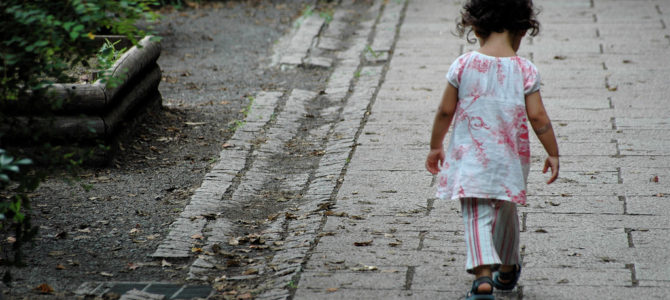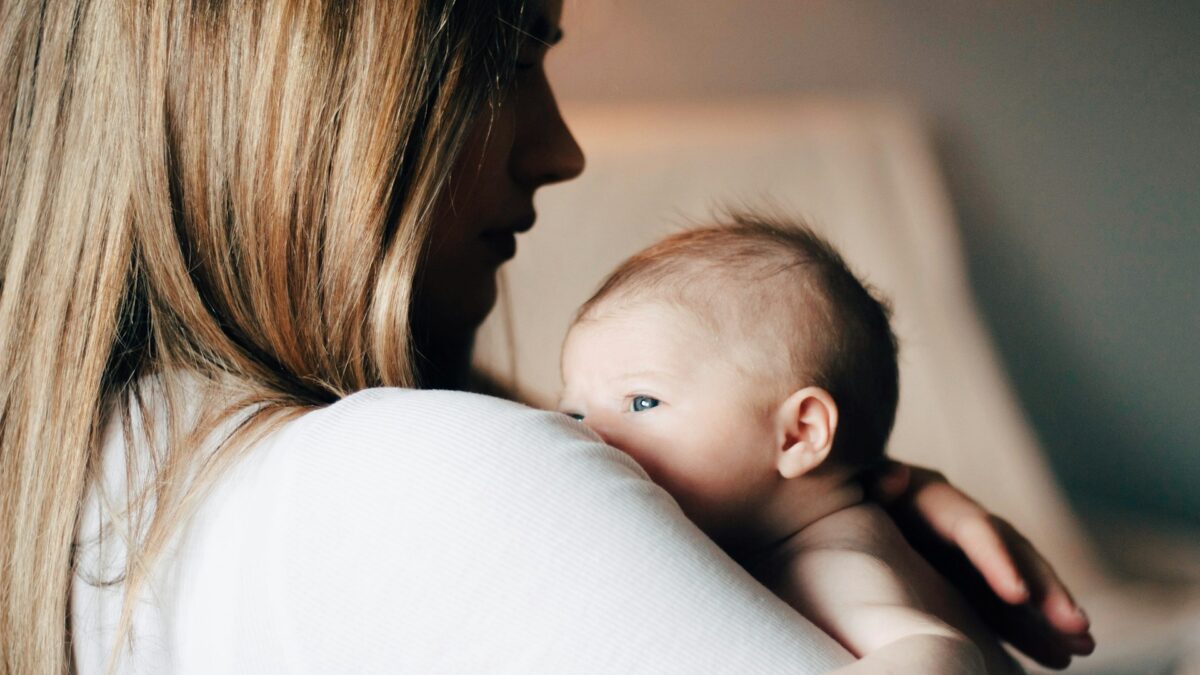
The culture war rages on, and the latest battleground is over the well-being of Illinois’ abused and impoverished children. The state’s Department of Child and Family Services (DCFS) has recently implemented an aggressive set of policies (Appendix K) designed to ensure that all LGBTQ youth in the child welfare system will have their self-proclaimed gender identities consistently affirmed. Anyone who isn’t on board with this will be corrected or terminated.
This new code has nothing to do with any established body of knowledge or practical wisdom regarding what is healthy for children, and everything to do with the ideological agendas of state bureaucrats. And the primary victims, as ever, will be the same children the code purports to serve.
Appendix K is extensive, but the upshot is simple: anybody who comes into contact with a self-identified transgender youth via the child welfare system must support and affirm the child’s chosen gender identity, at all times and without reserve. These kids must be protected from any kind of scrutiny or skepticism regarding their gender identity, or any situation that might cause them discomfort over their gender expression.
Foster home or facility placements for children that don’t offer unconditional support for all gender identity claims shall be denied contracts. Any DCFS staff who are insufficiently enthusiastic about this approach must be re-educated and, if this is unsuccessful, dismissed.
Entirely Built On Subjective Feelings
I’ll be generous and assume here that this code was designed with the best of intentions, out of a heartfelt desire to meet the needs of a particular subset of troubled youth. Nonetheless, it demonstrates a profound and dangerous ignorance of the realities of transgenderism, childhood development, the effects of trauma and family disruption, and the on-the-ground realities of the child welfare system.
Although the Left likes to talk about gender identity as if it’s settled science, the surrounding controversies show the matter is far from settled, and the terms in which it is discussed are anything but scientific. Necessarily, the DCFS code rests on a set of unfounded premises surrounding transgenderism, as the text of the policy reveals.
This is apparent right from the glossary in the (lack of) definition of “gender identity” itself: “One’s innermost concept of male or female or both or neither; how individuals perceive themselves and what they call themselves.” Words like “concept” and “perceive” immediately alert us that we’re dealing with something subjective and intangible, for which rigid codification is inappropriate.
The fact that a non-trivial number of people identify as transgender, consistently over time and without apparent impetus or gain, suggests we are dealing with a real phenomenon. But what that phenomenon is exactly—well, we simply don’t know. No biological basis has been discovered. Is it a valid alternative psychological state? A manifestation of mental illness? Pure social construction? The results aren’t in, hence the need for an open-ended abstraction in place of a proper definition.
Built on such a weak foundation, none of Appendix K’s later implicit assumptions can stand. Elsewhere in the glossary, the code draws a distinction between being transgender and the DSM diagnosis of gender dysphoria: “Gender Dysphoria emphasizes distress, not disagreement, between birth-assigned gender and gender identity. Disagreement between birth-assigned gender and gender identity is not pathological and does not need diagnosis.” But, lacking any solid conception of what transgender is and what causes it, how can DCFS make such an assertion?
It is clearly a significant aberration from both social norm and observable reality. We don’t affirm an anorexic patient’s distorted self-perception of being overweight. And the Left has no problem condemning transracialism. Progressives will cry, “Well that’s different!” but without any tangible explanation for transgenderism, they can’t convincingly explain why.
What We Know about Transgender Kids
Now, there are things we do know about the transgender population, some of which Appendix K correctly identifies. It points out: “LGBTQ youth, as a group, have a higher incidence of suicide attempts, runaway behavior, substance abuse, high-risk sexual behaviors, sexually transmitted infections, HIV and pregnancy.” This is true. Specifically, the rate of suicide attempt among transgenders is, by some estimates, nine times that of the general population. What we don’t know is: why? The Left reflexively attributes this statistic to stigma. If only we were more accepting, if we were just nicer people, these tragedies might be prevented.
Yet, as the New Atlantis’ recent report on gender and sexuality points out, very little empirical evidence supports this idea. It’s just as likely that transgenderism is connected, perhaps causally, with a host of other mental health issues that contribute to suicidal behavior. At present, the research doesn’t say, and it’s unwise to make assumptions either way.
Additionally, we know that the majority of kids who identify as transgender will change their minds by the time they reach adulthood. It stands to reason, then, that they weren’t really transgender (whatever that means) in the first place, if we’re acknowledging transgender as an enduring state.
By dogmatically affirming all claims of transgender identity, Appendix K not only mandates perpetuation of what will often be a falsehood, but also willfully overlooking whatever underlying mental health issue is causing these kids to claim to switch genders in the first place. This is effectively an aiding and abetting of mental illness. DCFS is responding to cries for help by affirming the cry and denying the help.
The Real-Life Consequences for Vulnerable Kids
These theoretical games have real-life consequences. Speaking from my own professional experience in the child welfare system, I can think of several considerations DCFS has either missed or disregarded, which could have a profound impact on the youth they claim to serve.
1. Appendix K effectively bars traditionally religious (or, for that matter, scientific) DFCS workers, agencies, or foster parents from operating within the child welfare system. That’s unfortunate, because all of these parties are in short supply. Child welfare workers have very high turnover, and necessarily, the bar for caring and competence is set low (although to be fair, many of them are downright heroic).
The demand for good foster families far outstrips the supply, as there are a great many more needy children than there are good homes for them. I’ve heard enough firsthand accounts of kids being abused, neglected, or molested in their foster care placements that I’m no longer shocked by these stories. Institutions and group homes serving kids in the child welfare system always have waiting lists. By weeding out all providers who dissent from the current gender orthodoxy, the state of Illinois is narrowing an already small pool and depriving untold numbers of its dependent youth of desperately needed services.
2. The code regularly references child “self-determination” in issues of gender identity. But as a general rule, self-determination is not what children need. To be sure, we should seek to facilitate their natural talents and inclinations, in a healthy way. And kids obviously need greater independence as they become older and more mature.
Still, what kids primarily need is direction and structure. They should be made to eat their vegetables, to go to school and do their homework, to come home on time and stay away from drugs. Offering them unconditional affirmation of something as consequential, as fraught with difficulty, as gender identity, is to offer them entirely too much power at too early a stage of development.
Let me build on this point. All children learn to manipulate the adults around them, whether it be knowing when to ask mommy and when to ask daddy, or how to convince the teacher they weren’t cheating on the test, just stretching in a classmate’s general direction. Kids who are stuck in the system learn how to manipulate the system.
For example, I’ve dealt with many kids who threatened suicide because they were, in fact, suicidal. Others threaten suicide because they know it will land them in the behavioral hospital, which they prefer to their dysfunctional homes. Kids learn how to make you pay attention to them, and they use this to their advantage. If they find out that claiming to be transgender gains them special power and privilege, don’t be surprised if some boys suddenly aren’t feeling so boyish anymore.
I don’t mean to paint these kids as villains, as their struggles are genuine and their needs valid. I only suggest that they may claim gender identity issues for a variety of reasons, and unconditional affirmation won’t always be the right approach.
3. Consider also that kids in the child welfare system have often been exposed to overwhelming trauma and had their familial ties disrupted. This results in extreme distress that will manifest itself in a wide variety of symptoms. There are any number of deep-rooted psychological reasons why they might claim a different gender identity, which need to be addressed on a case-by-case basis. A mandated one-size-fits-all approach such as that of Appendix K is not only misguided but lazy, and virtually guarantees that many will receive counterproductive treatment that does more harm than help.
The Safest Victims
It’s ironic, but unsurprising, that the intended beneficiaries of Appendix K, abandoned and disempowered children with nobody but the state to advocate for their interests, would be employed as guinea pigs for liberal causes, sacrificial lambs to the progressive vision. When kids in the child welfare system suffer, when they’re removed from good parents or returned to bad ones, when they’re placed in abusive foster homes or forgotten in institutions for years at a time, typically there are no lawsuits. No pots are stirred. Nobody will seriously be held accountable. What better specimens for the social experiment of absolute transgender affirmation?
Regardless of who ultimately “wins” the culture war, prepare to count Illinois’ sexually confused and abused youth as among its civilian casualties.









